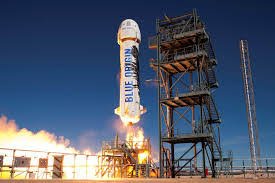India’s Nuclear Energy Roadmap: Achieving 1 Lakh MW by 2047
India, with its burgeoning energy needs and commitment to sustainable development, is setting ambitious targets in the nuclear energy sector. The recent announcement by the government to achieve 1 Lakh MW of nuclear power capacity by 2047 underscores the nation’s dedication to harnessing clean and efficient energy sources.
The roadmap for this ambitious goal involves significant investment in research, infrastructure, and international collaborations. With this vision, India aims to reduce its dependence on fossil fuels, mitigate carbon emissions, and ensure energy security for its growing population.
To achieve this milestone, India is focusing on various aspects of nuclear energy development. This includes expanding the nuclear power plant capacity, enhancing safety protocols, promoting indigenous technology, and fostering partnerships with other countries for knowledge exchange and technological advancements.
Investments in nuclear energy are not just about meeting energy demands but also about bolstering the economy through job creation and technological innovation. Furthermore, nuclear power plays a crucial role in diversifying the energy mix, reducing the nation’s vulnerability to fluctuations in fossil fuel prices and supply disruptions.
While the journey towards achieving 1 Lakh MW of nuclear power capacity is challenging, it presents immense opportunities for India to emerge as a global leader in clean energy technology. By embracing nuclear energy, India can pave the way for a sustainable and prosperous future.

Why this News is Important:
Addressing Energy Needs Sustainably:
India’s aspiration to achieve 1 Lakh MW of nuclear power capacity by 2047 reflects its commitment to meeting energy demands sustainably. This initiative aligns with global efforts to transition towards cleaner and renewable energy sources, reducing reliance on fossil fuels and mitigating climate change.
Economic and Technological Implications:
The ambitious nuclear energy roadmap not only addresses energy security but also holds significant economic implications. Investments in nuclear energy infrastructure and research stimulate economic growth, create job opportunities, and foster technological advancements, contributing to India’s overall development.
Historical Context:
India’s pursuit of nuclear energy dates back to its independence era, with the establishment of the Atomic Energy Commission in 1948. Over the decades, India has made significant strides in nuclear technology, including the development of indigenous nuclear reactors and fuel cycles.
The landmark Indo-US Civil Nuclear Agreement in 2008 marked a turning point in India’s nuclear energy program, enabling international cooperation and access to nuclear technology and fuel. Despite challenges such as public concerns over safety and nuclear proliferation issues, India has continued to expand its nuclear power capacity.
Key Takeaways from This News:
| Serial Number | Key Takeaway |
|---|---|
| 1. | India aims to achieve 1 Lakh MW of nuclear power by 2047. |
| 2. | The initiative aligns with global sustainability goals and reduces dependence on fossil fuels. |
| 3. | Investments in nuclear energy infrastructure will stimulate economic growth and create job opportunities. |
| 4. | International collaborations play a crucial role in India’s nuclear energy development. |
| 5. | Nuclear energy diversifies the energy mix, enhancing energy security and reducing vulnerability to supply disruptions. |
Important FAQs for Students from this News
What is India’s target for nuclear power capacity by 2047?
India aims to achieve 1 Lakh MW of nuclear power capacity by 2047.
What are the key reasons behind India’s emphasis on nuclear energy development?
India’s focus on nuclear energy development is driven by the need for sustainable energy sources, reducing dependence on fossil fuels, mitigating climate change, and ensuring energy security.
How does nuclear energy contribute to India’s economy?
Investments in nuclear energy infrastructure stimulate economic growth, create job opportunities, and foster technological advancements.
What role do international collaborations play in India’s nuclear energy roadmap?
International collaborations facilitate access to advanced nuclear technology, knowledge exchange, and fuel procurement, enhancing India’s nuclear energy capabilities.
What historical events have shaped India’s nuclear energy program?
India’s pursuit of nuclear energy dates back to its independence era, with significant milestones such as the establishment of the Atomic Energy Commission in 1948 and the Indo-US Civil Nuclear Agreement in 2008.
Some Important Current Affairs Links
















